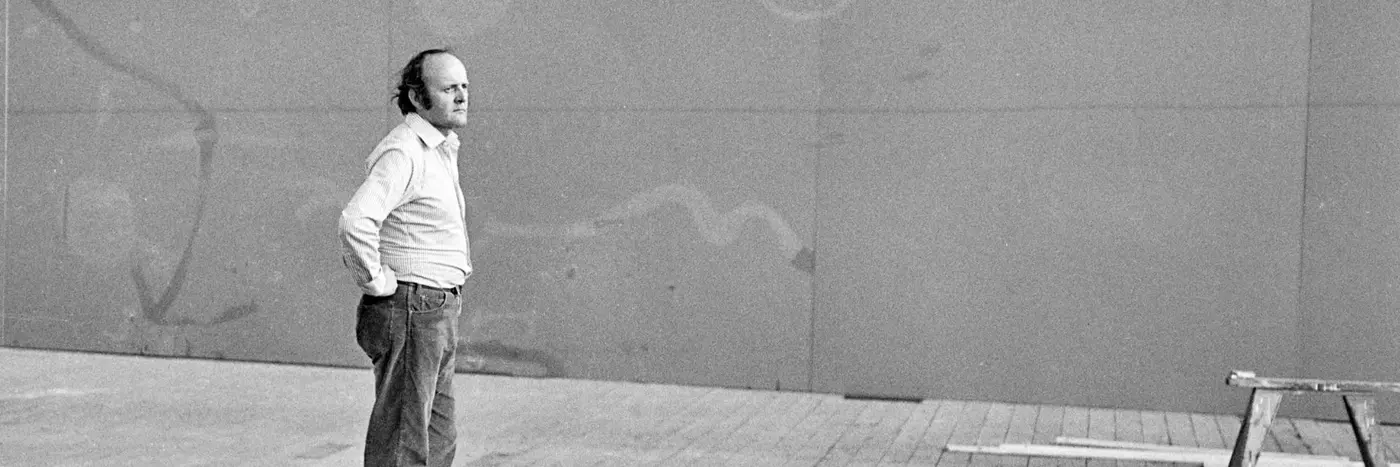The inside story of Olsen’s celebrated Opera House mural
When I went to see Kenneth Slessor, he was working as a journalist, his poetical self long since disappeared, and he told me a story. It was the story of an artist who drowned in Sydney opposite the place where the Opera House now stands.
The story went like this. It was a Saturday night. There was much jollity. They heard there was a party that night in Mosman, so they all went down to the ferry. Joe Lynch, the cartoonist, was with them. It had been a rainy day and Joe had two bottles of beer in each pocket of his overcoat. And so they all got on to the ferry and then, when they were near what is now the Opera House, a big liner passed by, the ferry jostled in the turbulence, and after a while someone said: ‘Where’s Joe?’
Joe had fallen overboard, anchored down by those bottles of beer. A true Australian death.
My mural was commissioned by the Sir William Dobell Art Foundation in 1971, two years before the building opened, and the same year that Slessor died. It was appropriate, I thought, that it would be based on Slessor’s Five Bells. Particularly because it emphasises the time factor, and the time factor really hung over the Opera House throughout its long construction. At one point, there had even been talk that they should abandon the project altogether. It was put about in the media that it would be better to put the money into hospitals and education. The usual thing.
The opening lines of Slessor’s poem are now famous:
Time that is moved by little fidget wheels
Is not my Time, the flood that does not flow.
Between the double and the single bell
Of a ship’s hour, between a round of bells
From the dark warship riding there below,
I have lived many lives, and this one life
Of Joe, long dead, who lives between five bells.
We carried the unfinished mural up to the site in five sections then we worked to finish it onsite. It had taken two years but had to be finished in the Opera House itself. People liked it, but there was a team of workers laying the purple carpet and one of them said his five-year-old could do better than that. I told them to go and see Rudy Komon, the art dealer.
It was a magnificent spot, facing the harbour. This is what I wrote in my journal when we visited the northern foyer in February 1972: ‘I like its inside outside feeling … The way it optically sweeps to Circular Quay on one side, sky above and then (it) rhythmically swings down towards the heads.’
Not only was Five Bells a wonderful poem, and one that happens to have parallels with the Opera House, but it also has a sense of place. That blue luminescence in the mural is the equivalent of water on the harbour, the phosphorescence. It’s supposed to be seen at night. The feeling of flying over Sydney Harbour but also sinking beneath the sea. Between the poem and the site, there’s a fusion that makes me very happy. It’s fresh. It’s elegiac. And it’s got these rich moods of the harbour in it.
But I remember the day I got in touch with Jørn Utzon, who by that time had gone back to Denmark. I had met him only once, but I wanted his views on what I was doing. Looking at the site, he said, you should make it move east to west so it merges visually with the harbour. He liked the concept. To get his affirmation in that call was a great help to me. He could see it was very important.
Incidentally, Joe’s body was never found.
This is an extract from Transcendence: 50 Years of Unforgettable Moments at the Sydney Opera House, published in September 2023 by Thames & Hudson Australia.
Read more about John Olsen at the Sydney Opera House
